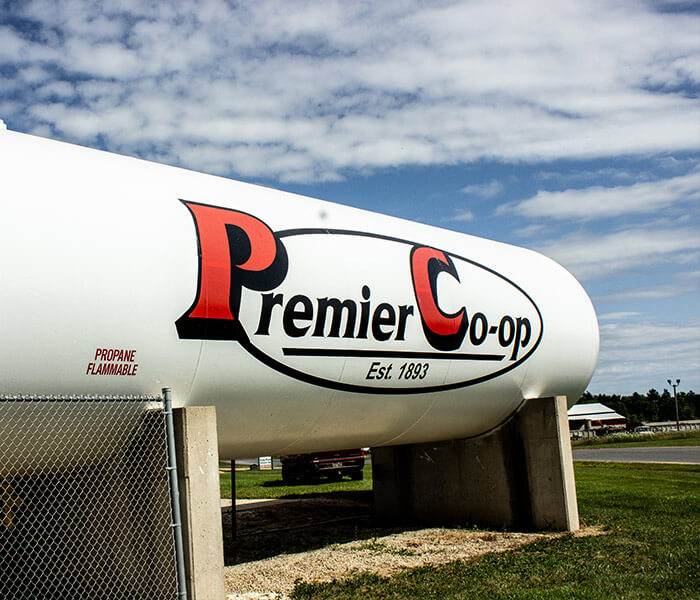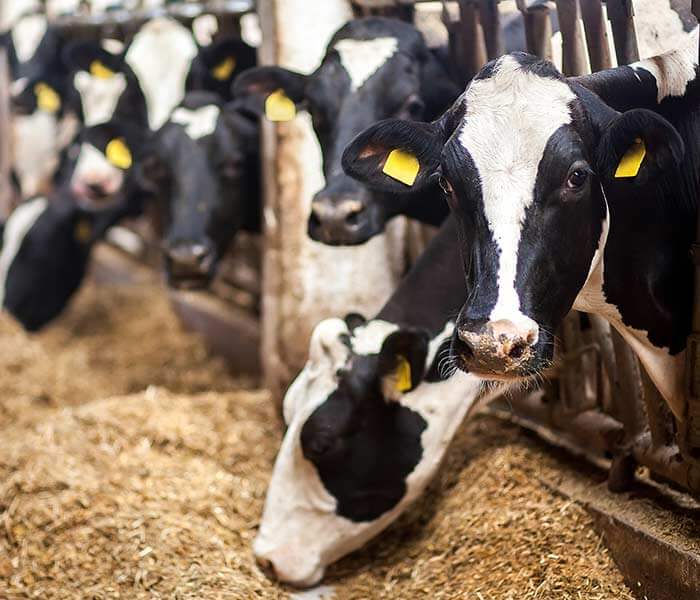Premier Co-op

April Energy News
Remember last month when I was talking smack about winter being over? I wasn’t ready to accept it and when I heard a blizzard was raging in the upper peninsula of Michigan the fir...

There are many concerns on cost of feed as it is one of the highest input costs in raising livestock. Many times, we look at cost per head per day to evaluate the cost versus the return on investment in evaluating feed program decisions. Typically, this comes down to the cost per ton on a purchased feed being used to supplement other on farm stored feed. This is a business practice to execute since it has a direct impact on out-of-pocket costs and cash flow. I want to point out other ways to help overall profitability that I know the astute farm managers already are implementing on their farms. How you store and manage forages for farms with ruminants can have a large impact on feed used versus feed wasted. Here are the points to examine.
Forage Shrink
1. Critter Control: Control rodents and critters from getting in the feed by keeping grass and weeds down. Having a proactive approach on rodents and raccoons is paramount and sometimes needs a professional to get this under control. Be vigilant about this year-round, not after there’s a problem. This is one of the biggest shrink costs. Birds eating corn from bags, bunkers and silos happens all the time, and in the cold months it gets worse as they eat more. These birds also create other problems, for instance, bacteria, which puts a strain on animal performance.
2. Feed wasted: Control the amount of spoilage on the top of bunkers by covering right away after filling and using an oxygen barrier cover, as well as wrapping the sidewalls. For bagged feed the biggest cost of shrink is how you get the feed out. Leaving a flap down after feeding keeps the sun from heating up the feed and keeps snow and rain to a minimum, which helps control the swings in moisture. Having a shovel next to the bag being fed helps prevent lost feed on the ground, but you must leave plastic on the ground and have a smooth base below that to make it easier to shovel. Swings in moisture also can happen in bunkers when too much feed is faced off and not used the same day. These swings in moisture are hard to control but can be minimized. Having feed exposed during hot weather raises shrink tremendously because it is decomposing faster. Cows already don’t want to eat when it’s hot and now we compound the problem and have a lot of feed to throw out.
So, what are the economics of doing all these management practices? Normal shrink on forage is 10-20%.
Let’s look at the impact of lowering the shrink on forage. For our example we are feeding 60% forage to 500 lactating cows (60% corn silage, 40% haylage)
At 10% shrink, that is $63,635 per year, and $127,050 per year at 20%. I think we can all agree that managing shrink is important.
Purchased Feed Shrink
Shrinkage in bins typically is 2-4% while a well-managed commodity shed is 3-8%. If you have flat storage, your risk is higher to have more shrink. Having dividers helps lower shrink in these sheds. Without dividers on the commodity feeds, there is a risk of wind loss and cross contamination. Having more travel to the mixer can quickly raise this shrink to 10% or more, especially if it’s a rough travel surface and it’s windy outside. Some feeds don’t flow from a bin, so we must do our best to control the shrink risk on these feeds. If it’s a protein mix at $550/ton and we have 4% shrink, that’s $22/ton lost on shrink.
Cow Feed Waste
Leftover feed is another shrink we need to manage. Feeding too much is a cost even if you reuse it for other groups because a lactating mix is more expensive than a heifer ration. We could also under feed and give up production and cow health. My main focus here is to be mindful of feed mixing quantities, and during hot weather try to feed at cooler times of the day.
Hopefully, you found these points helpful in identifying factors that will affect shrink and how to minimize them, ultimately controlling costs and driving higher profits for your farm.
